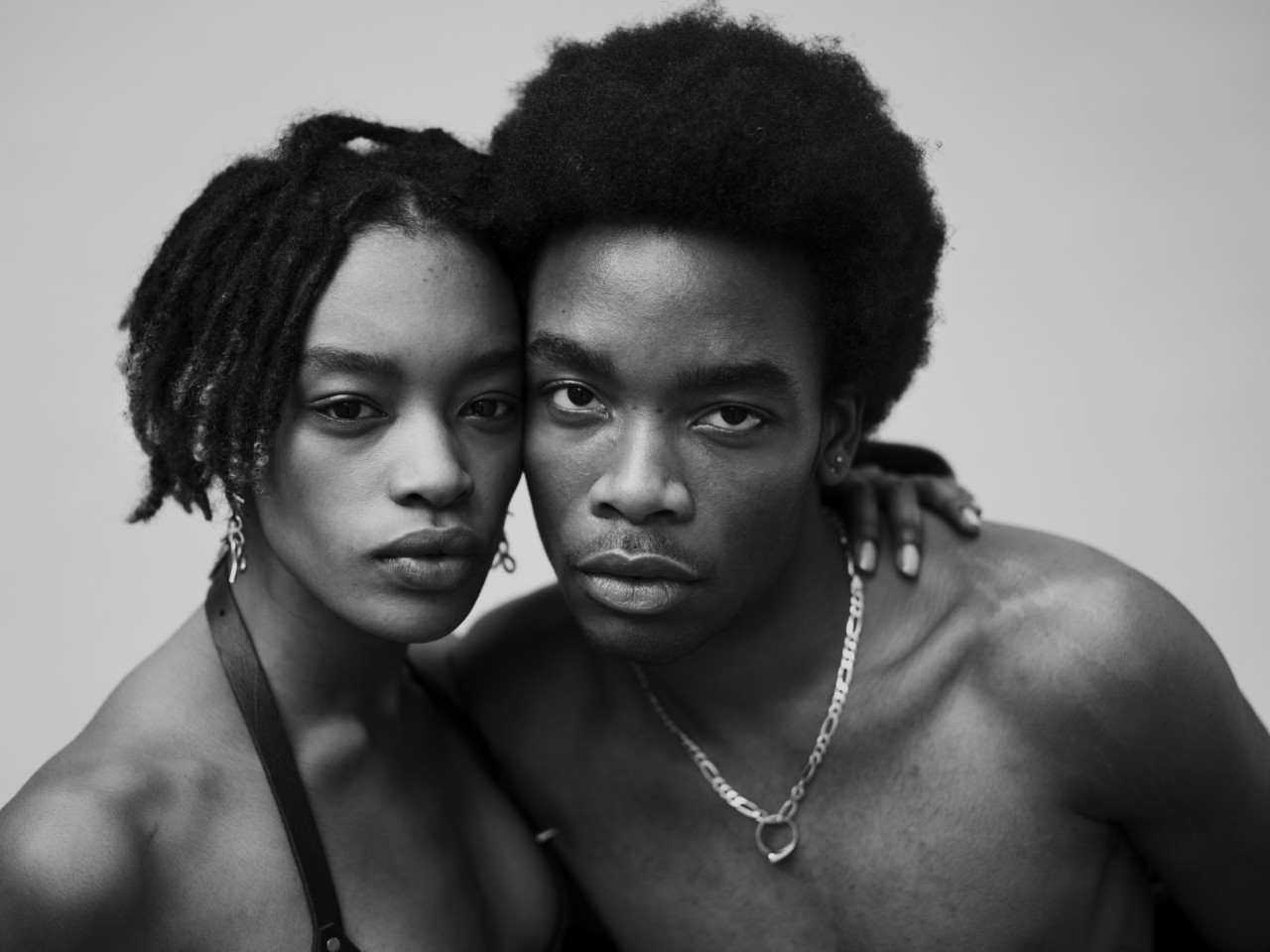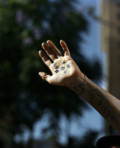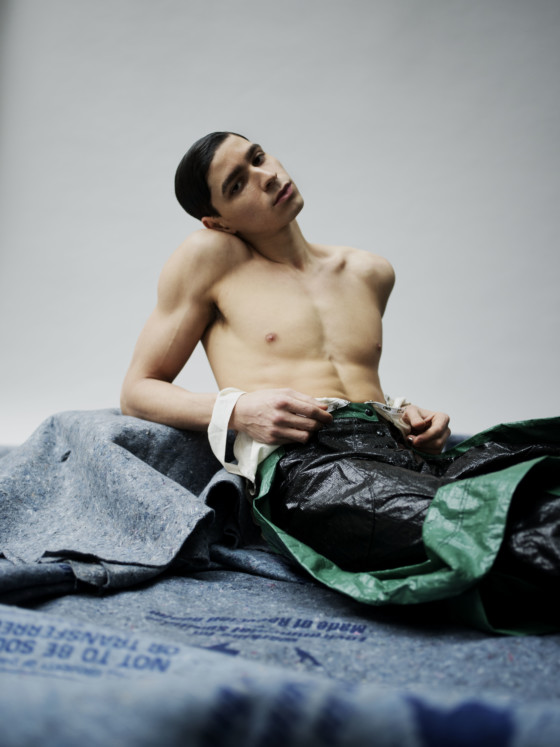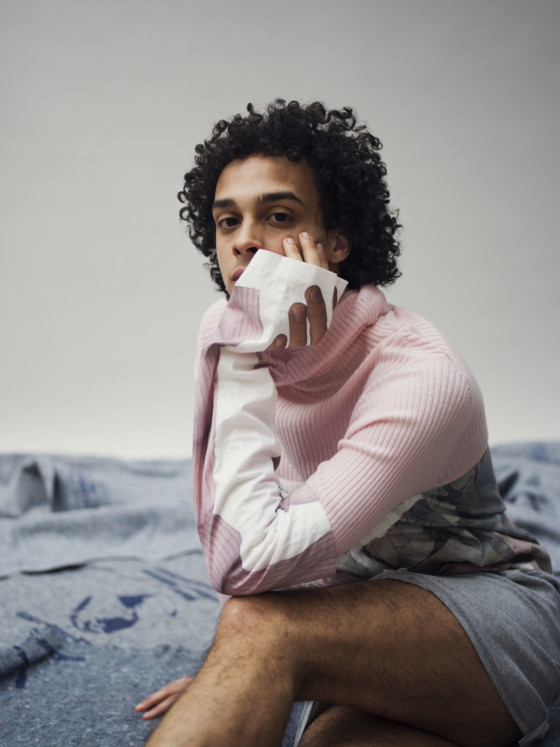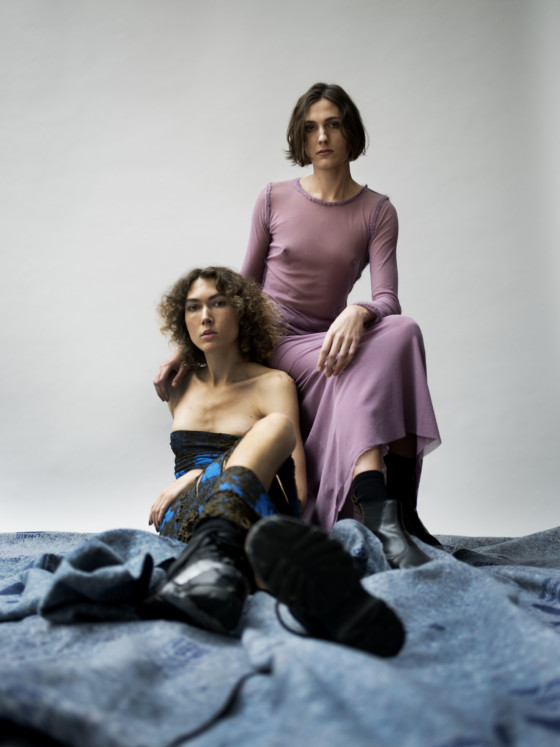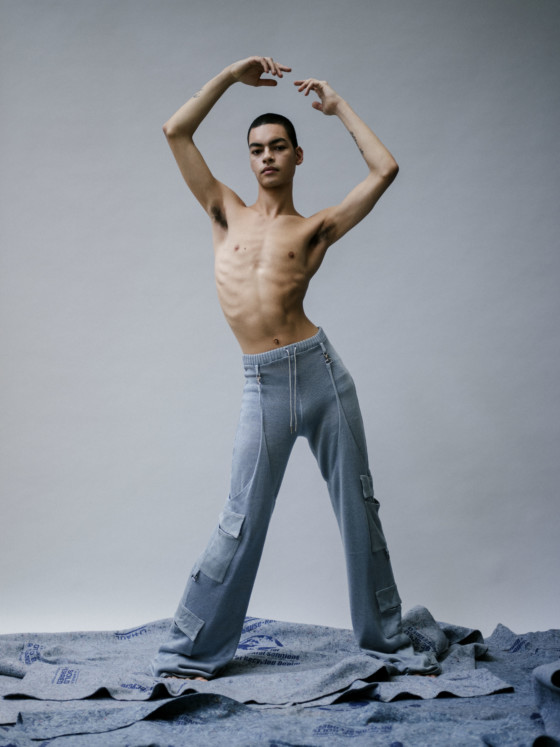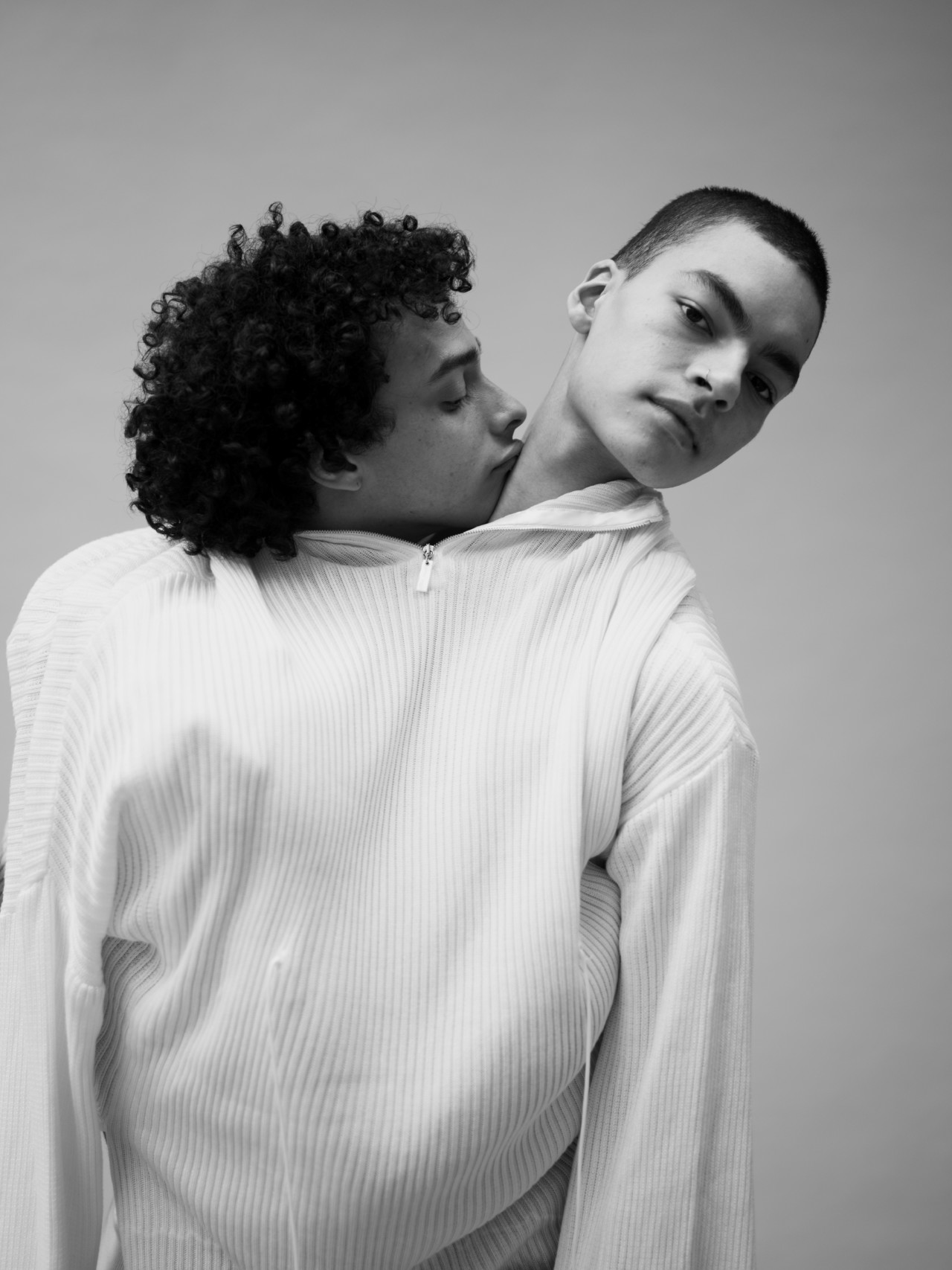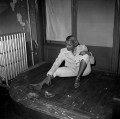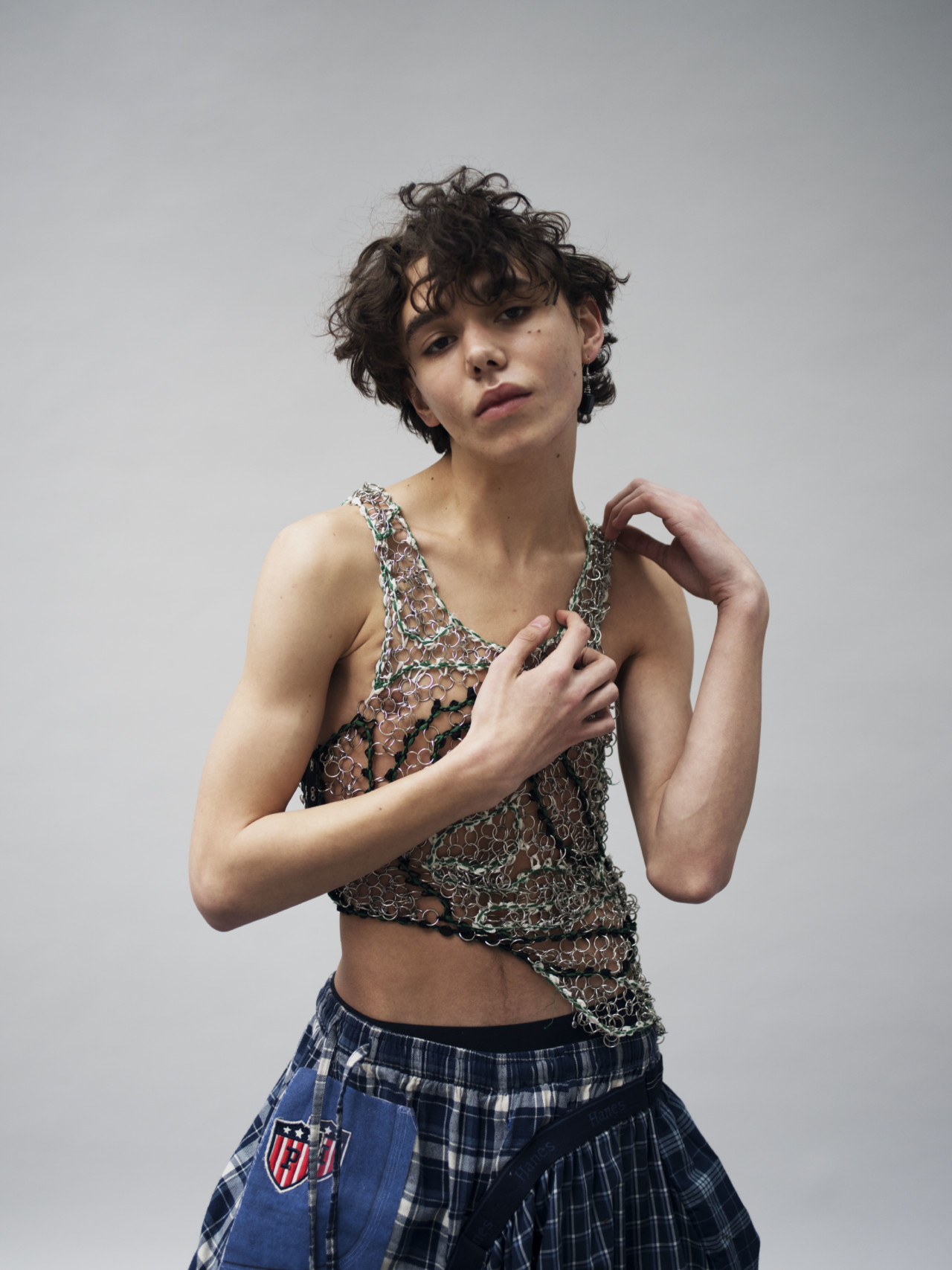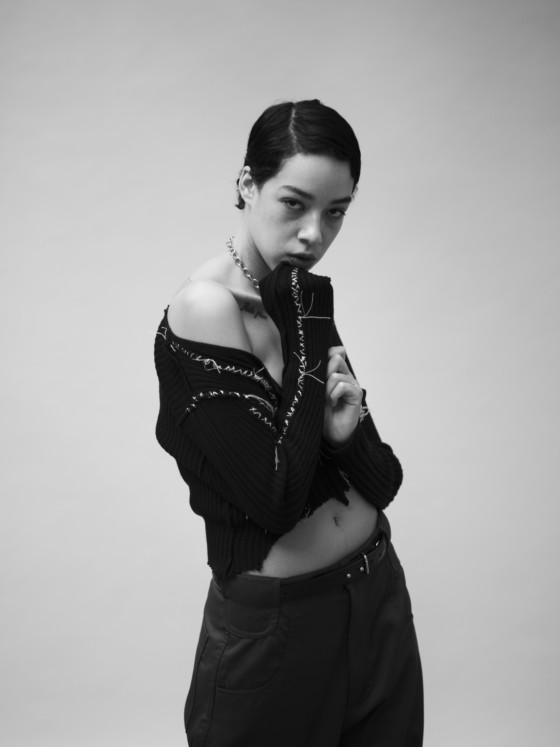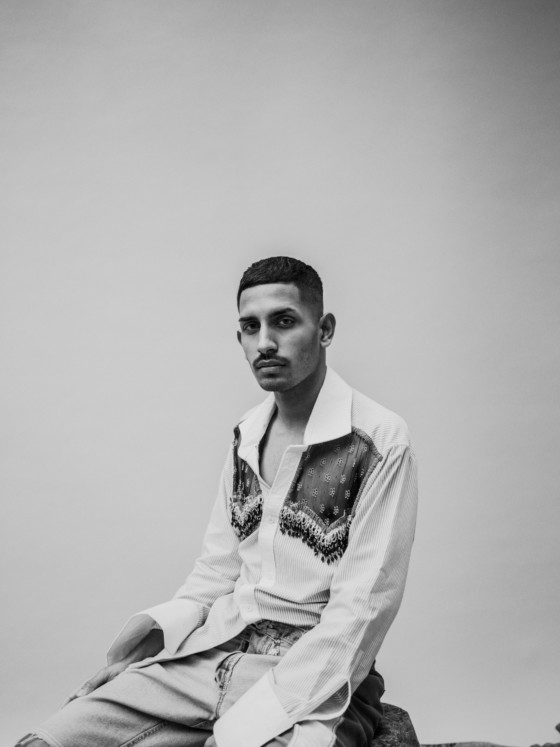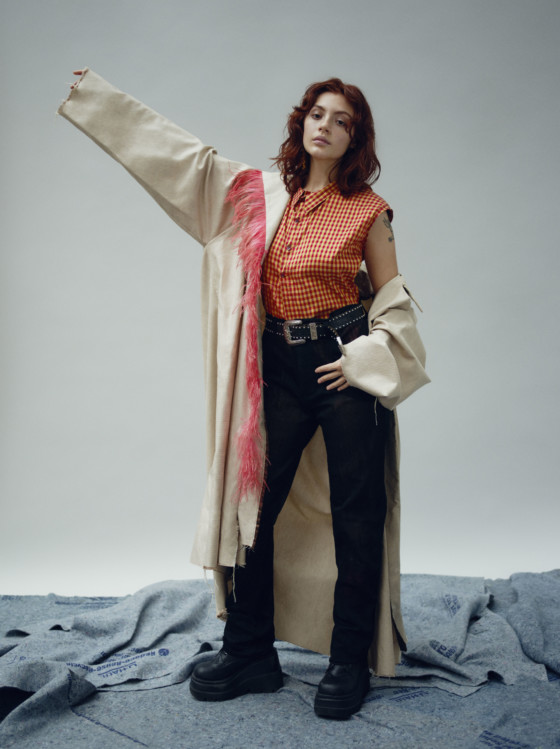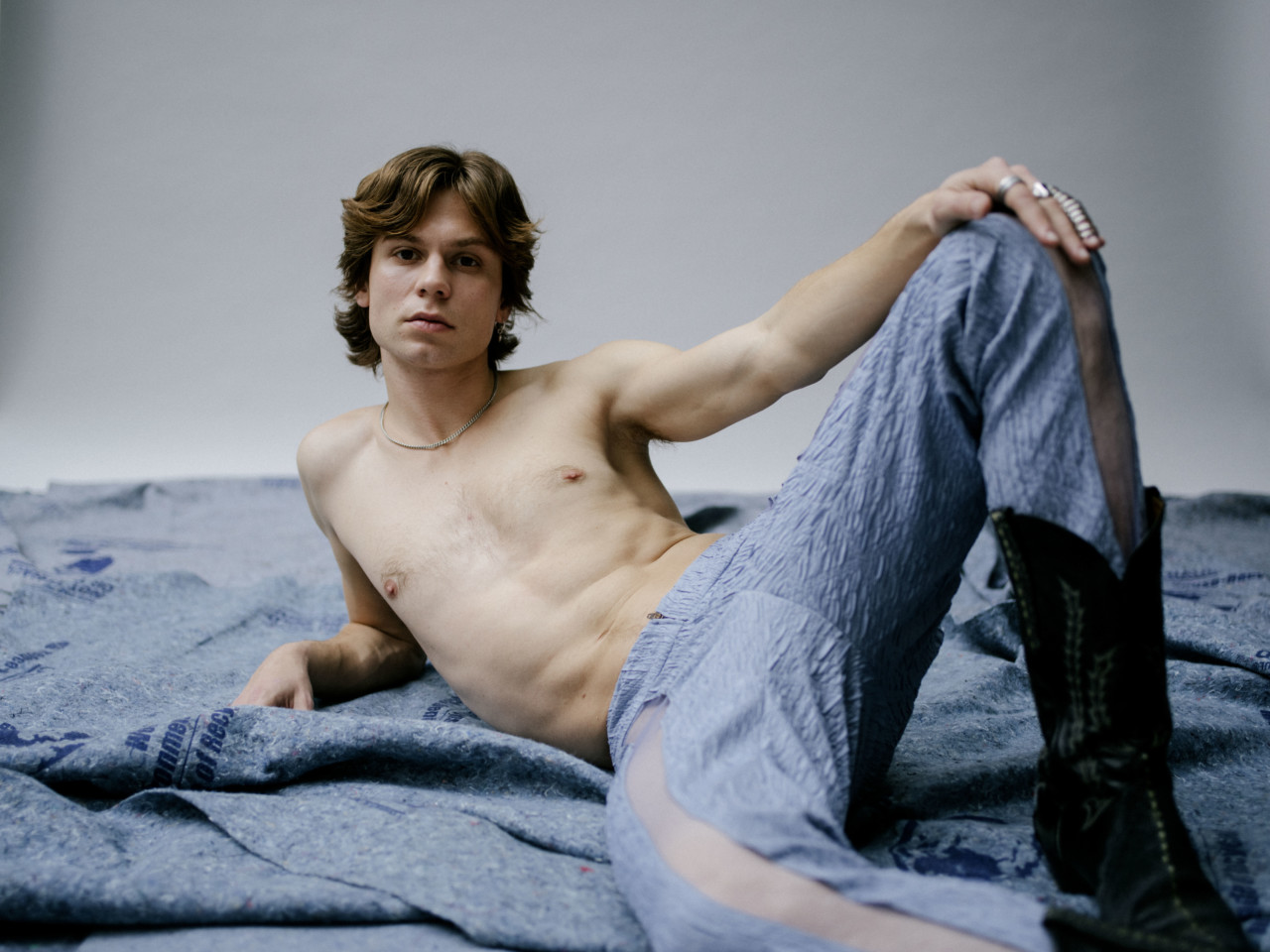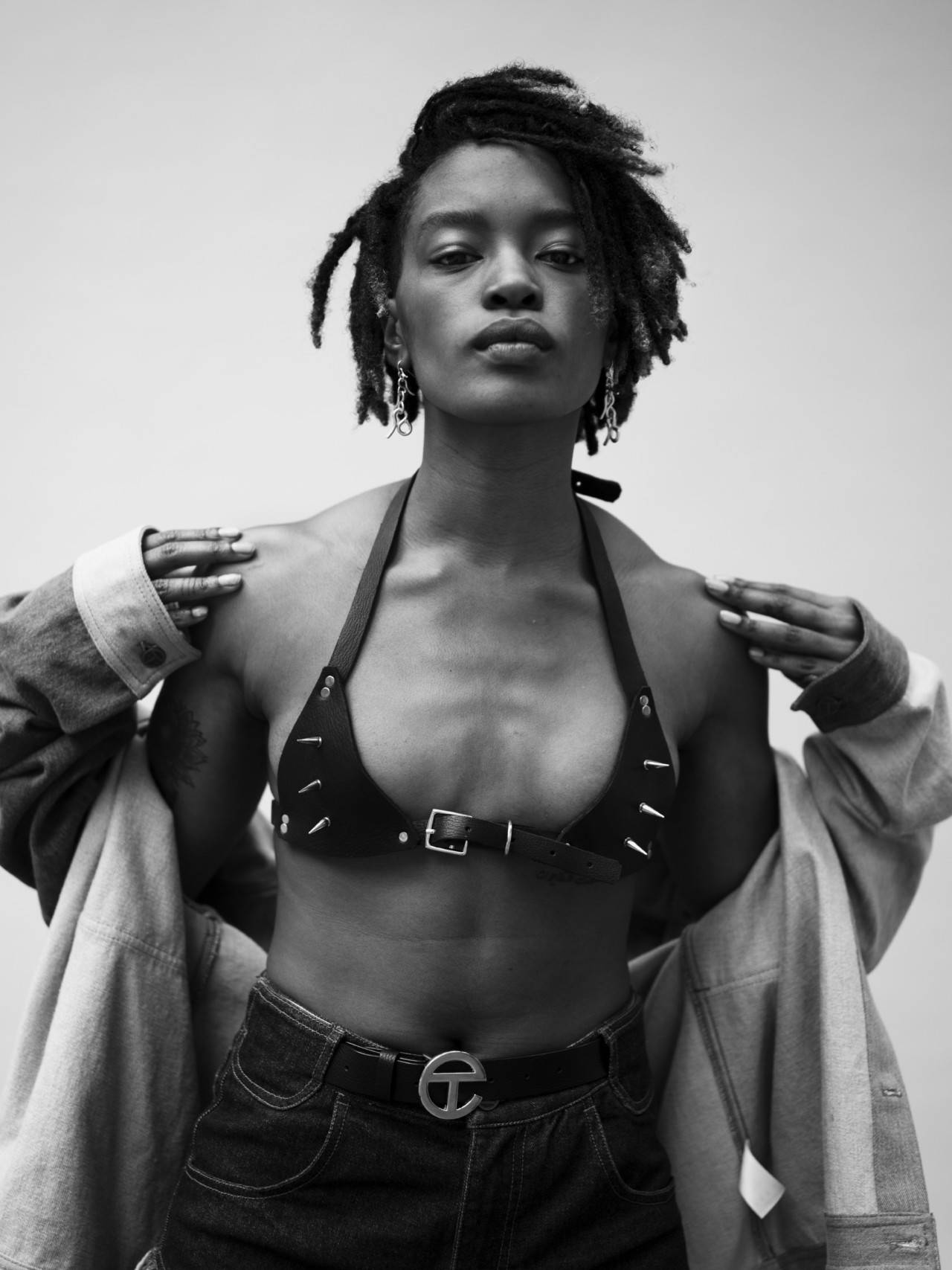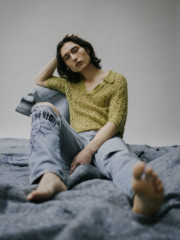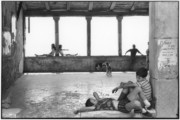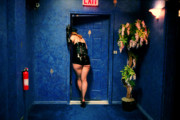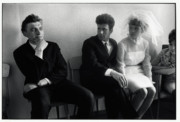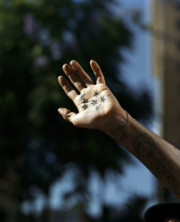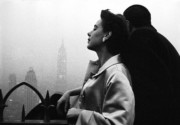New Pandemics: Fashion, Identity, and Representation
Gregory Halpern's latest project, a collaborative shoot with an LGBTQ+ modelling agency, continues his exploration of beauty, contradictions, and identity through photography
Magnum 2018 nominee Gregory Halpern sees the fashion world as a place of contradictions: while often a realm of privilege and elitism, it is also an environment where new approaches to beauty are explored and the parameters of popular aesthetics broadened. His latest project, a collaboration with New Pandemics, an LGBTQ+ casting and model management agency in New York, is his first work within a fashion context.
Despite the fact that fashion is a new and distinct area for Halpern, the project represents a continuation of his exploration of aesthetics, now in a context that is free of certain constraints he has long operated within: “I think the constant is a fascination with human form and with vulnerability. I have always been interested in contradictions within a picture, within portraits especially. People are so complicated and are generally mysteries even to themselves.” Halpern explains.
"I think the constant is a fascination with human form and with vulnerability. I have always been interested in contradictions within a picture, within portraits especially"
- Gregory Halpern
Halpern has a long-standing interest in experimenting with formalized portraiture, and he was initially struck by the beauty of many models at the agency. Upon further exploring the idea of working with New Pandemics’ founder Cody Chandler, it quickly became evident that a collaboration might continue the conversation and visual language around beauty and representation.
When asked about the importance of documenting the LGBTQ+ community in this way, Halpern says, “The best way to answer this is for me to quote (New Pandemics model) June Gordon’s eloquent reply to the question Is being photographed important?” June writes, “I think being photographed is important because I think it’s important anytime a queer person is photographed. We live in a world where simply being visible as a queer person is an often rebellious act. And I think that photography is one way that queer people claim our visibility in a world that would rather render us invisible altogether. I know that for me, seeing photographs and images of other trans women always makes me feel seen and valid in a way that is so important when you occupy an existence that is constantly under threat.”
"We live in a world where simply being visible as a queer person is an often rebellious act"
- June Gordon
The agency has, since the start, been focused also on working with independent young creative talent. Its models are largely themselves involved with the arts and Chandler expresses a vested interest in working with up and coming LGBTQ+ designers whenever possible. New Pandemics is, he claims, effectively a collective, creating a “space in the fashion industry that is uniquely Queer while also not being insulated from the broader discussion and cultural exchange.” He adds, “The existence of the agency alone sparks conversations, and that already serves a purpose. If it opens dialogue among clients and creatives for why it needs to exist then that’s a good first step.”
To this end, actively promoting visibility and representation of the LGBTQ+ community is a part of the mission, but not the full picture. Engaging with the wider industry, according to Chandler, “remains essential to the DNA of New Pandemics. To grow with photographers, designers, and talented creatives all on their way to carving out their own unique paths and marks on the industry.” He adds that, for this collaboration, all of the models are wearing pieces exclusively by emerging Queer designers. It is this layered approach to engagement that defines the agency.
In terms of the wider visual landscape around commercial work – and advertising specifically – Halpern is similarly in favor of disruption and change: He was interested in making a concerted effort to move away from typical advertising imagery which he finds is often “oppressive and suffocating in the way it presents a desirable norm.”
"Advertising is a powerful tool, why not utilize it just like any other medium or means of communication?"
- Cody Chandler
Halpern’s most recent book project, Confederate Moons, examined the polarization of contemporary American society through a moment at which much of the nation found itself oddly unified: in the transient act of staring at the 2017 total solar eclipse. When asked whether he sees making this fashion work – which willfully engages with the discourse around gender fluidity and identity – as a continuation of his examination of a dichotomy in American society, he is guarded. “This project operates differently for me than the Confederate Moonswork. This felt much more uplifting, almost like a celebration. It seems that things really are shifting in America (or at least within some major swaths of the country) in terms of how we think about gender, gender roles, sexual orientation, and identity. As I see it, New Pandemics is responding to that demand and making its own demands that we change the way we see each other.”
Ultimately, both Halpern and Chandler feel that fashion and advertising can be used as a means of addressing vacuums in visual representation, and that doing so can be a force for change. Chandler reflects, “Advertising is a powerful tool, why not utilize it just like any other medium or means of communication?”
This project is a co-publication with Vogue. Read more about Gregory Halpern’s collaboration with New Pandemics on Vogue, here.


